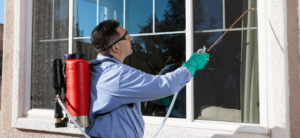Print eye-catching indoor and outdoor signage, POS displays, packaging, and promotional goods. Produce brilliant, colorful, and tactile prints with smooth gradation and low graininess. Featuring opaque White ink and eye-catching Gloss or Matte Varnish, this versatile flatbed printer delivers outstanding image quality without compromise.
The best UV printer for you will depend on your specific needs, the material types and volume you plan to print, and your desired speed and versatility. Contact Digital Technology Group, Inc. now!

Unlike solvent-based inks, UV inks don’t evaporate, leaving behind 100% of the ink’s deposits. This helps to produce high-resolution images and sharp text. It also prevents fading and moisture damage to the printed material, extending its life. Additionally, UV inks can be used on various substrates, including glass, metal, and wood. The print quality of a UV printer is a vital consideration when purchasing one for your business.
Whether you want to produce a bespoke trophy or a unique sign, a UV flatbed printer is an excellent option. This type of machine can be used to produce a variety of materials, including metal, acrylic, and canvas. Its intelligent control system can also create stunning prints on special-shaped products. Its unique design enables it to produce a full range of colors and textures, and its high printing accuracy makes it ideal for creating intricate patterns.
The latest UV flatbed printers incorporate state-of-the-art technology to facilitate quality ink placement and drying for a crisp, clear outcome. They’re designed to work with a variety of surfaces and are available in different sizes. In addition, many of these machines have a remote monitoring feature that allows you to monitor the performance of the equipment from anywhere.
This high-quality UV printer features a high-resolution print head that delivers a resolution of up to 2880 dpi. This ensures that every detail is clearly visible. The print head is equipped with multiple nozzles and supports 8mm drop printing to meet the printing requirements of various projects. Moreover, it is easy to operate and comes with a multi-diameter cylindrical fixture that can easily print on special-shaped products.
This professional-grade flatbed UV printer features the advanced 10-color UltraChrome UV ink set, providing vivid prints with low graininess and smooth gradation. It uses the Epson Cloud Solution PORT for real-time remote monitoring of printer status and production efficiency, making it a versatile choice for any print service provider. Its robust build offers stability and durability, while the high-definition MicroPiezo printheads provide precision printing. Its user-friendly interface allows easy setup and maintenance to minimize downtime.
Print Speed
The MT-UV 9060 SE uses advanced printhead technology, creating high-quality prints at an impressive speed. With a maximum print size of 2.25m2 and the ability to handle a range of substrates, this machine is capable of meeting the demands of any production environment. A powerful continuous ink supply system reduces the frequency of adding white ink and prevents waste by alerting the operator of ink shortages. This innovative feature increases productivity, minimizing downtime and reducing maintenance costs.
In addition to a high print speed, the SC-V7000 also boasts an impressively high image quality. Utilising a market-leading ten colour ink set including red and grey, this printer delivers superb output with stunning contrast and striking colours. Its unique printhead layout also enables printing with both white ink and varnish simultaneously, further boosting the productivity of your workflow.
Designed for businesses that produce a wide range of promotional products, the SC-V7000 is an ideal choice for photo-retailers, e-commerce printers and visitor attractions such as theme parks. It can print directly onto a variety of hard surfaces including wood and acrylic, as well as a range of personalised items such as keychains, pens and signage.
This UV flatbed printer is also equipped with a visual positioning function to allow for more accurate printing of curved and uneven substrates. Furthermore, it can print ink in both white and clear modes, expanding its capabilities beyond standard signage materials to include a wider variety of customized products and objects. With its advanced UV curing system, this machine is able to provide high-quality, durable results that will stand up to the test of time. The system uses electronic ultraviolet (UV) LEDs to instantly cure the ink, preventing the ink from fading due to exposure to light. In addition, it features a low-maintenance design that is easy to operate and clean. This machine is supplied fully-assembled and ready to use, making it simple to get started right away. Its simple design and user-friendly software make it a great option for those who are new to UV printing. A powerful RIP software helps you to take full control of your printing process and create high-quality prints at an impressive speed.
Paper Feed Options
The Epson SureColor P700 printer offers the option to print on both roll and cut paper. This allows users to expand the range of substrates they can try, and it makes the printer more attractive to those who sell prints as a part of their business. This model also offers the ability to print in Photo or Matte black, which helps eliminate the annoyance of having to switch between inks to produce different kinds of images.
The printer has four paper feed options, including a top-loading slot that can accommodate sheets up to 432 x 559 mm in thickness. A cassette holds up to 100 sheets of plain, multipurpose or archival paper. There’s a rear manual feed for up to 2 inches of extra paper. Finally, a roll paper feed fits up to 13 feet of Moab Entrada or Moab Enhanced Fine Art Paper (sold separately).
Once you’ve loaded the correct media in the appropriate slot, you can use the front control panel to select the size of your image and the number of copies you want to print. You can even set the print head to automatically cut paper at a predetermined point, saving you time and effort while cutting your prints.
Epson also includes a Utility tab in the printer’s driver that gives you access to maintenance functions and other settings. You can use it to adjust your color calibration and reset the default paper settings. In addition, you can change the printer’s sleep mode and disable a password.
One of the few downsides of this printer is that it doesn’t offer a way to adjust the dry time. This can be problematic for some types of substrate, such as canvas, because it can cause a slight banding.
The printer is expensive, but it’s a high-quality printer with excellent color accuracy and good scanning speed. It’s ideal for photographers and artists who sell their work. It’s also the only desktop flatbed UV printer that supports B&W printing, and it has a small footprint. Despite these positives, the printer’s high price tag can keep it out of reach for most consumers.
Print Quality
Having the right tools to help ensure consistent print quality is essential. The best way to do this is by using color calibration and monitor calibration software, as well as having a good understanding of printing basics. This will ensure that the colors you see on your monitor are true to life and that the printed product looks as good as possible.
A good quality printer will also allow you to create a wide range of file formats, which is useful for creating different types of projects. Some will even be able to support specialty media, such as clear film or metal foils, which is ideal for projects that require high-definition prints.
Epson’s UltraChrome UV inks provide an outstanding color gamut and superb image clarity. They have been tested to comply with GreenGuard Gold, AgBB, and German-VOC standards, which are all good signs that the product is environmentally friendly.
Designed for sign and display makers looking to expand their product offering, the SC-V7000 is a bonafide flatbed UV printer that lets you print onto a wide range of materials, including glass, wood, stone, and PVC. With a unique ten colour ink set, including red and grey, it is capable of producing extremely accurate, highly detailed, and visually appealing print results.
The VSDT feature on the V7000 allows you to freely vary the size of each droplet applied, which is perfect for producing fine gradations and smooth transitions. Additionally, the ioniser helps to minimise static charge so that the print drops aren’t deflected, and the crash sensor detects any potential problems with the printheads to avoid damage.
With a maximum print width of 2.5m, the V7000 is able to handle large and complex jobs with ease. It is also capable of printing onto a range of substrates, which opens up new revenue streams that many PSP’s would otherwise struggle to access. The VSDT technology, continuous ink supply system, and white ink circulation system all work together to reduce the need for frequent addition of ink and improve overall workflow efficiency. This makes the V7000 one of the most productive and versatile flatbed UV printers on the market today.



